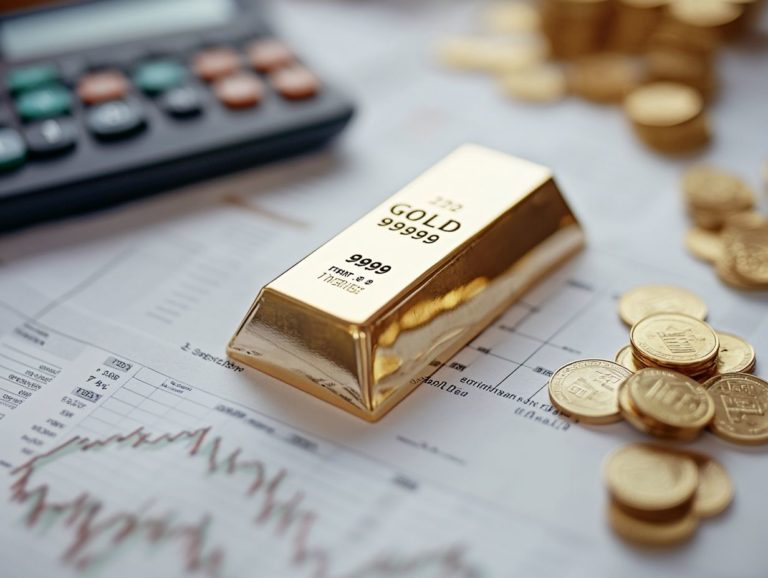The Connection Between Gold and Currency
Gold occupies a distinctive position in human history, representing not just wealth but also serving as a fundamental medium of exchange.
From its early role as currency to its intricate relationship with contemporary financial systems, gold continues to wield considerable influence.
This exploration delves into the evolution of gold as a currency, tracing its transition to modern systems and the ongoing debates surrounding gold standards versus fiat currency.
Discover the exciting pros and cons of gold as a currency in our digital age!
You’ll discover how various factors, including supply and demand dynamics and geopolitical events, shape gold s value in today s market.
Contents
Key Takeaways:
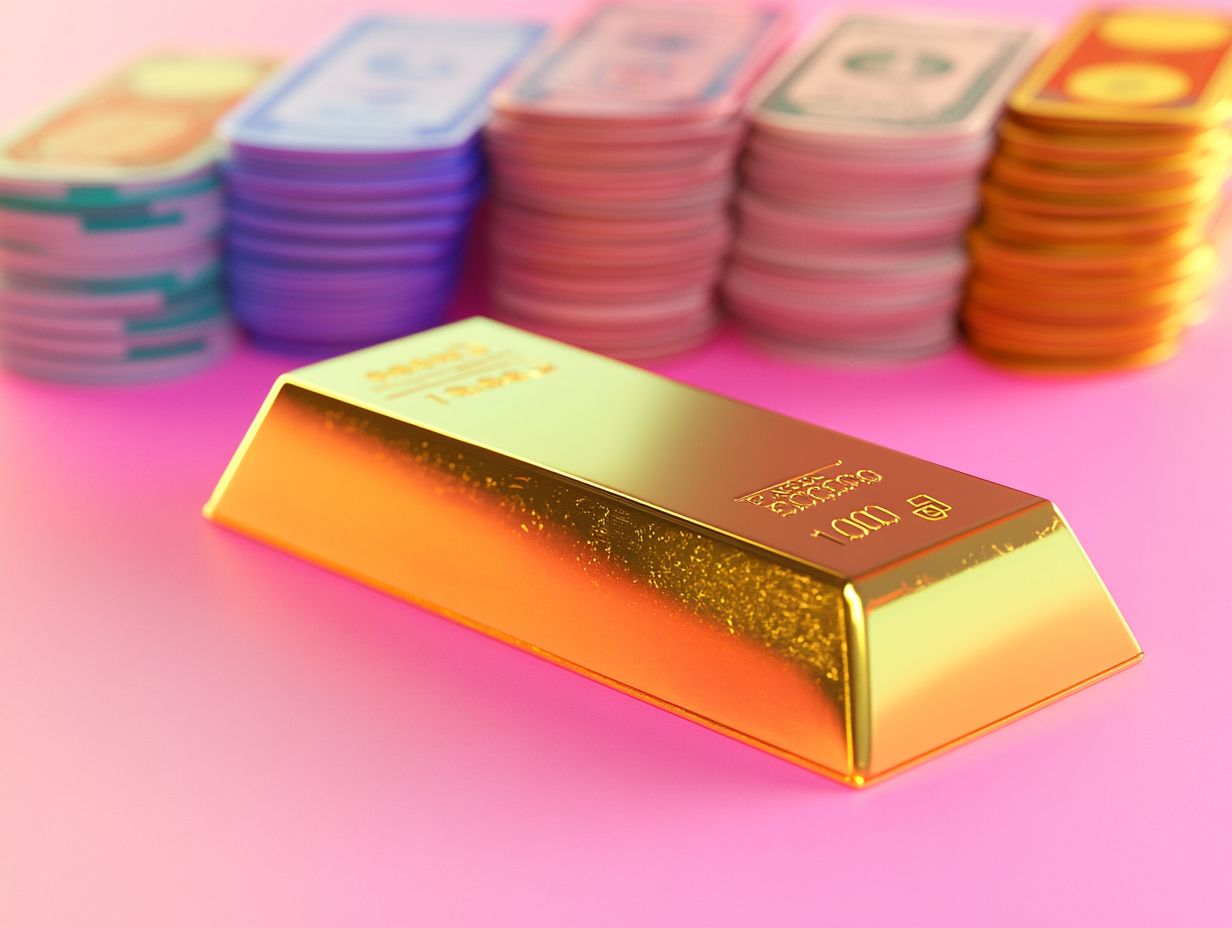
- Gold has been used as currency since ancient times and has played an important role in the development of modern currency systems.
- The use of gold as a standard for currency has shifted to fiat currency, but central banks still hold significant gold reserves.
- The value of gold and currency is affected by factors such as supply and demand, as well as political and economic conditions.
The History of Gold and Currency
The intricate history of gold and currency unfolds over centuries, beginning with the early adoption of gold as a medium of exchange in ancient civilizations. It was revered for its intrinsic value and rarity.
Picture the time of King Croesus, who minted the first gold coins in the 6th century BC, setting a precedent that would influence economies for generations. Through the ages, from the splendor of the Byzantine Empire to the rise of modern economies, gold has been a cornerstone in shaping national wealth and facilitating trade.
The transition from gold to fiat currency reflects profound transformations in human economic relationships and monetary policy, illustrating how our understanding of value and exchange has evolved across different eras.
Early Use of Gold as Currency
The history of gold as currency stretches back to ancient civilizations, with its early use prominently highlighted during the reign of King Croesus, who is credited with minting the first gold coins around 600 BC. This innovation marked a pivotal moment in economic history.
By introducing a reliable medium of exchange, gold transformed trade and reshaped societal perceptions of value. Historical records, particularly those penned by Herodotus, reveal how various regions began to favor gold over traditional barter systems, recognizing its inherent worth and scarcity.
As gold coins emerged as symbols of wealth, economies flourished, allowing societies to navigate challenges like trade surpluses and deficits.
The capacity to measure wealth in gold established a foundation for future financial systems, weaving gold’s enduring legacy into the fabric of broader economic developments that still resonate in today’s world.
Development of Modern Currency Systems
The evolution of modern currency systems has seen remarkable transformations, moving from the gold standard to the fiat system that now shapes today s economic landscape, influenced by historical events and economic indicators.
This progression mirrors the expansion of global trade and the intricate task of managing national economies. In the beginning, the gold standard provided a concrete basis for currency value, tethering it to a finite resource that fostered trust.
However, as nations sought greater flexibility in monetary policy to tackle economic crises, they gradually embraced fiat currencies, enabling governments to issue money grounded in trust rather than tied to physical assets.
While this shift has enhanced liquidity and spurred economic growth, it has also introduced challenges such as fluctuating inflation rates and concerns over long-term economic stability. Today, central banks play a critical role in balancing these elements, employing various strategies to mitigate the risks associated with an increasingly abstract monetary system.
Why Gold Still Matters in Today’s Economy
In today’s financial landscape, gold maintains a prominent position, regarded as a dependable hedge against inflation amidst the unpredictable nature of fiat currencies.
Even with the fiat system dominating global trade and economics, gold’s enduring value remains a cornerstone for those looking to safeguard their wealth.
Learn more about how gold impacts your investments!
Gold Standard vs. Fiat Currency
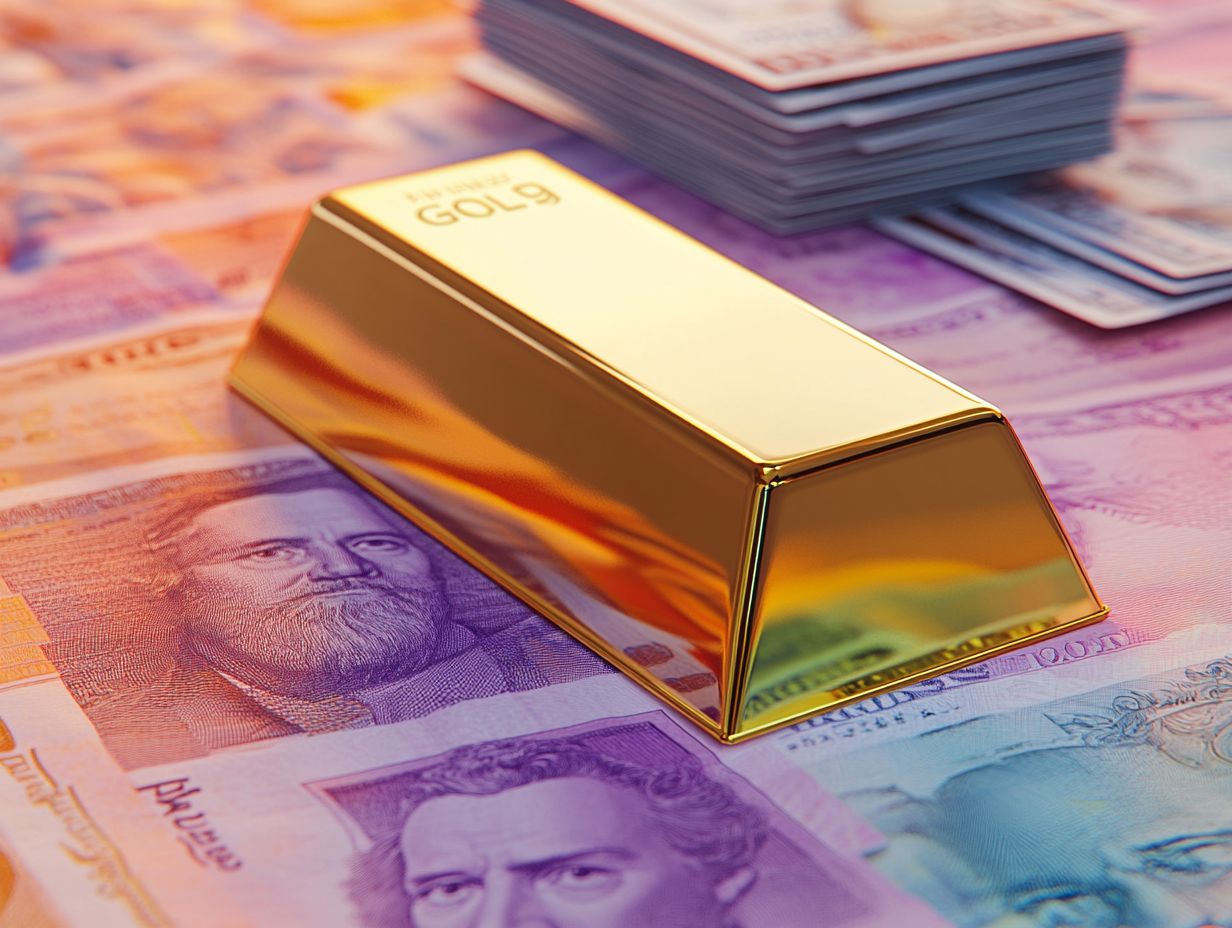
The debate between the gold standard and fiat currency revolves around their roles in fostering economic stability. Supporters of gold argue that it serves as a superior hedge against inflation during economic downturns. This discussion dives into important themes in money management, where history offers valuable lessons from periods of hyperinflation (when prices rise rapidly and money loses value) and economic upheaval.
Advocates of the gold standard emphasize its tangible backing, arguing it constrains reckless government spending. This helps preserve the currency’s purchasing power. Critics point to the rigidity of such a system, which can restrict a nation s ability to adapt to shifting economic indicators.
In contrast, modern fiat currencies provide greater flexibility in money management, allowing governments to adjust supply according to economic demands. This flexibility comes with risks, including potential devaluation and a decline in citizen trust.
Central Banks and Gold Reserves
Central banks worldwide hold substantial gold reserves as a key part of their money management strategy. They understand that gold can enhance financial stability and restore confidence during times of economic uncertainty.
These reserves act as a hedge against inflation and currency fluctuations. They provide a safety net for policymakers navigating turbulent economic waters. By holding gold, central banks can stabilize their national currencies and influence economic indicators, contributing to the overarching landscape of global finance.
Institutions like the International Monetary Fund closely monitor these reserves, highlighting the critical role gold plays in fostering economic resilience. In times of crisis, such assets can enhance a central bank’s credibility, reassuring markets and investors that stability is within reach.
Factors Affecting the Value of Gold and Currency
The value of gold and currency is shaped by numerous factors, including the complex interplay of supply and demand dynamics, inflation rates, and broader economic indicators impacting currency value across national economies.
Supply and Demand
The interplay of supply and demand significantly influences gold prices and currency value. Market demand fluctuations often trigger dramatic price shifts in both commodities and currencies.
For instance, when global uncertainty rises, investors flock to gold as a safe-haven asset. This surge in demand, combined with a limited supply, can drive gold prices upward. Conversely, when economic conditions stabilize, interest in gold typically wanes, leading to a decrease in its price.
The strength of currencies is sensitive to supply dynamics. For example, when central banks expand the money supply, this can result in currency depreciation, ultimately eroding purchasing power on the international stage.
Market trends, including geopolitical events and inflation rates, often act as catalysts for these supply and demand shifts. This underscores the intricate relationship between gold and currency values.
Geopolitical and Economic Factors
Geopolitical tensions and economic factors, such as trade surpluses and deficits, significantly influence the value of gold and currency. During economic downturns, there s often a surge in investment demand for gold, making it a sought-after refuge for investors.
This interplay creates a landscape where fluctuations in international trade are closely monitored. A country facing a trade deficit may see its currency depreciate, increasing gold’s appeal as a safe-haven asset. Understanding the relationship between silver and gold prices can further enhance investment strategies in this context.
Inflationary pressures, driven by rising commodity prices or expansive monetary policies, complicate this relationship. Investors often seek the stability that gold provides. Concurrently, shifts in investment trends, shaped by global economic indicators and market sentiment, frequently dictate capital flow into gold, reinforcing its vital role as a hedge against volatility.
The Pros and Cons of Using Gold as Currency
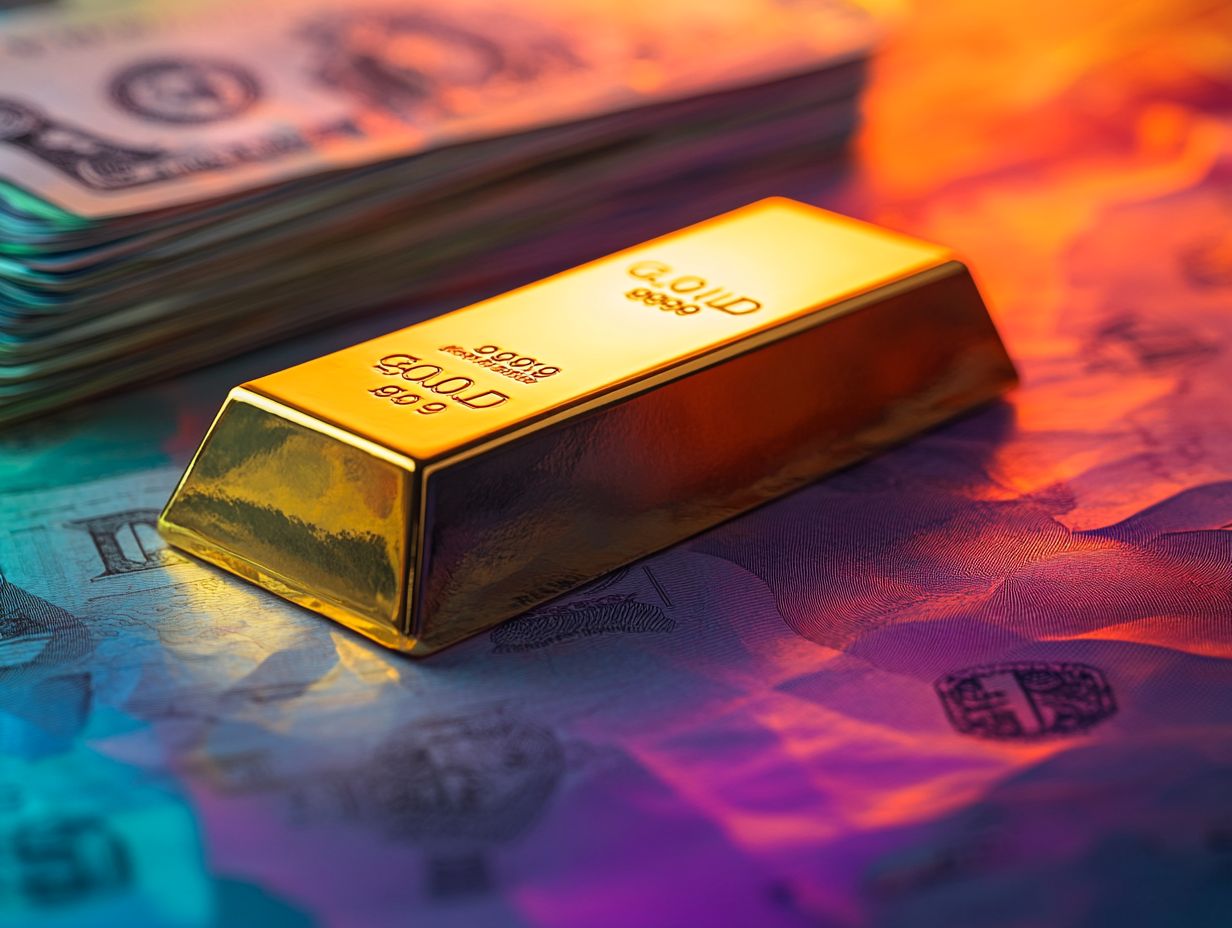
Using gold as currency presents you with a distinctive blend of advantages and disadvantages. On one hand, it boasts a reputation as a stable investment and an effective way to protect against inflation.
On the other hand, it comes with its own set of challenges, including the often prohibitive costs associated with storage and transportation.
Stability and Inflation
Have you ever wondered why gold is considered such a strong investment? Gold has long been regarded as a stable investment and a trusted way to protect against inflation, especially during economic downturns when traditional currencies may waver.
This reputation is rooted in its historical performance during periods of economic uncertainty. Sharp declines in stock markets often drive investors toward this precious metal.
Take, for instance, the 2008 financial crisis. During this tumultuous time, gold prices surged as uncertainty loomed. This highlighted its remarkable ability to retain value while other assets plummeted.
As inflation rates rise, the purchasing power of your currency diminishes. This makes gold an appealing option for wealth preservation.
Investors frequently turn to gold when central banks expand the money supply. They anticipate that the resulting inflation could erode their savings, thus reinforcing its status as a safe haven.
Storage and Transportation Costs
One notable drawback of using gold as currency is the high costs associated with its storage and transportation. These can undermine some of its advantages as a medium of exchange.
These challenges present significant practical hurdles for everyone, whether you re an individual or a business managing your gold holdings.
The infrastructure needed for secure storage complete with vaults and insurance adds to ongoing expenses. This can make gold less appealing for everyday transactions.
Transporting gold requires intricate logistics, often involving armored vehicles and stringent regulations. This can further inflate costs.
As a result, these logistical complexities and expenses prompt a reevaluation of gold’s effectiveness in modern economies. This is especially true when compared to digital currencies that offer greater convenience and lower transaction costs.
Frequently Asked Questions
What is the connection between gold and currency?
The connection between gold and currency dates back centuries. Gold has been used as a form of currency due to its scarcity, durability, and universal value.
How does gold affect the value of currency?
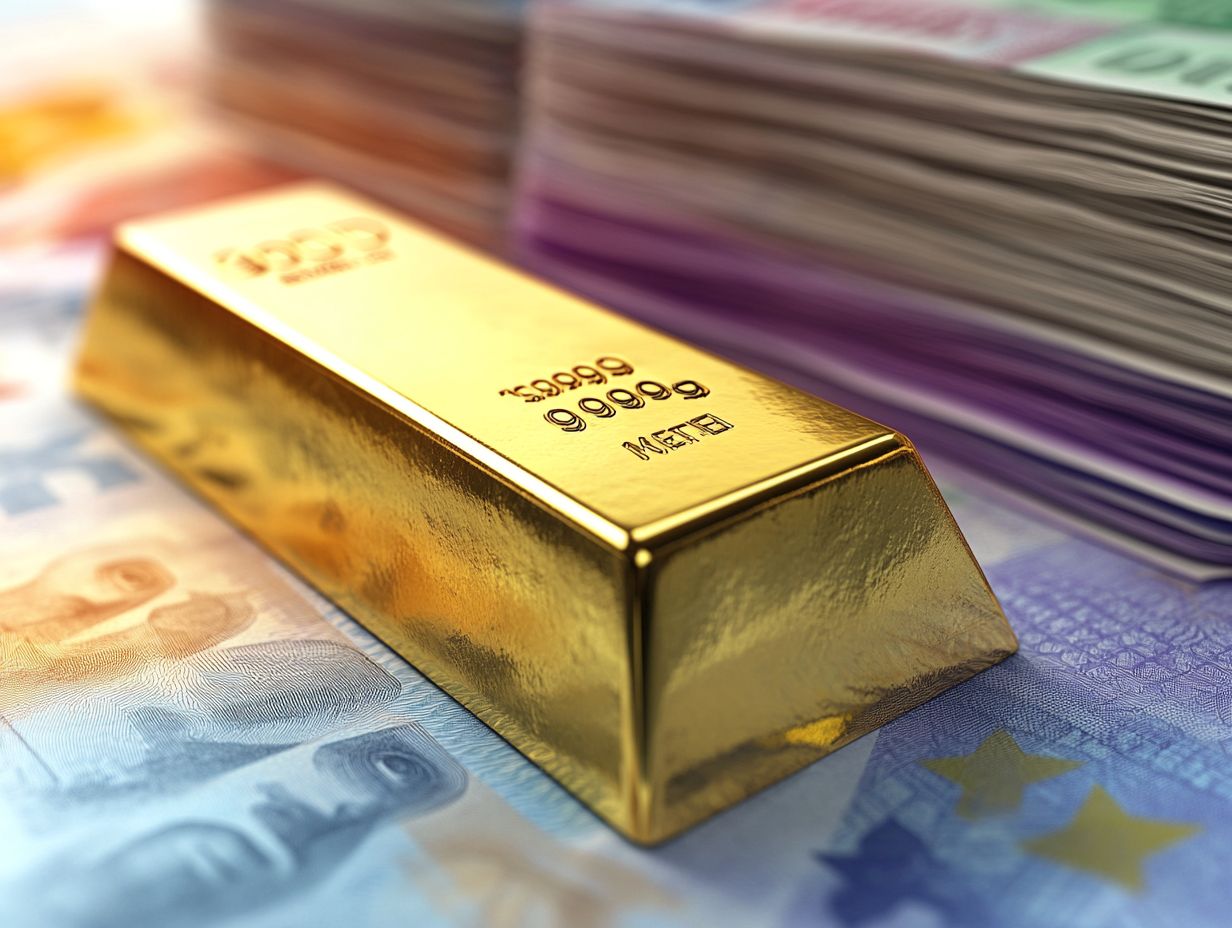
Gold has traditionally served as a benchmark for global currencies. Its value is closely linked to the strength of a country’s economy and its currency. Changes in the price of gold can impact the value of a currency.
Why is gold considered a safe haven for currency?
People trust gold as a safe haven during times of economic uncertainty or instability. It is seen as a reliable store of value that can protect against inflation and market fluctuations.
What is the gold standard?
The gold standard links a country’s money directly to gold. This means you can exchange currency for a fixed amount of gold.
How has the connection between gold and currency changed over time?
The connection between gold and currency has evolved over time. The gold standard was abandoned in most countries in the mid-20th century. However, gold still plays a significant role in global currency markets and is often seen as a hedge against economic uncertainty.
Is gold still used as a currency today?
Although gold is no longer used as a physical form of currency, it still holds value as a commodity and is traded on global markets. Some countries, such as China and Russia, have been increasing their gold reserves in recent years.
This highlights the continued importance of gold in the global economy.
Explore how gold can secure your financial future!













